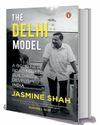
Republic Day celebrations in Delhi bring both national fervour and tight security arrangements that turn the city into a fortress. On January 26, both were breached. In a shocking turn of events, many groups of farmers, who had been protesting the new farm laws on the borders of the state for more than two months, stormed into the heart of the capital and hoisted the Nishan Sahib, the Sikh religious flag, at the Red Fort, the symbolic seat of power. The farmers had been allowed to hold a tractor rally on police-approved routes on Republic Day.
The farmer unions’ demand for the repeal of three farm laws had been gathering support from across the country. But the moral high ground of the movement being peaceful and disciplined was lost in a few hours of violence. And the leadership of the joint command of union leaders seems to have been weakened.
With the use of Sikh symbols, the movement now has a stronger religious colour, and the acrobatics atop the ramparts of the Red Fort, where prime ministers hoist the tricolour every year, have made the accusations of anti-nationalism louder.
The police were ill-prepared, despite intelligence reports that fringe elements could provoke violence. And it has tarnished the Narendra Modi government’s strong governance image. The Delhi Police are under the Union home ministry. It was the second occasion of mass violence in less than a year in the capital city. In February 2020, communal violence rocked the northeastern part of the city for three days.
Bu hikaye THE WEEK dergisinin February 07, 2021 sayısından alınmıştır.
Start your 7-day Magzter GOLD free trial to access thousands of curated premium stories, and 9,000+ magazines and newspapers.
Already a subscriber ? Giriş Yap
Bu hikaye THE WEEK dergisinin February 07, 2021 sayısından alınmıştır.
Start your 7-day Magzter GOLD free trial to access thousands of curated premium stories, and 9,000+ magazines and newspapers.
Already a subscriber? Giriş Yap

Forging the future
As the curtain falls on 2024, I take pride in the extraordinary milestones achieved under the leadership of Prime Minister Narendra Modi. This year stands as a testament to the Modi government's resolve to forge a resilient and forward-looking Bharat. From groundbreaking advancements in infrastructure to visionary global initiatives, these efforts resonate deeply with the vision of Viksit Bharat.

Our strange democracy
Abraham Lincoln is lauded as among the very best presidents the US ever had: the statesman par excellence successfully steered the nation through the devastating and perilous years of the American civil war. Not only did Lincoln manage to keep his country united, he also ensured the passage of the 13th amendment to the US constitution, which abolished slavery.

Five years of post-pandemic fashion
It has been five years since we discovered what Covid-19 was, and five years since it disrupted the world forever. The World Health Organization activated their emergency systems on January 1, 2020, and informed the world by January 4, 2020. By the end of that week, they had set guidelines for various countries to follow. Comparable to the Spanish flu of 1918, more than 7 million people have died of Covid according to official data. Unofficially, no one has an idea. WHO has just this week asked China to provide critical data to understand the virus's origins as a “moral and scientific imperative”.

Community spirit
Rhythm of Dammam opens a window to the world of African-origin Siddis of Uttara Kannada

'Breaking' down a scandal
Society Girl is not just a case study of a high-profile death in Pakistan but also a stark commentary on media trials

Progress card
Jasmine Shah's book tells you what the AAP has achieved in Delhi in the last 10 years

SENSE IN NONSENSE
In his latest book of poetry, Ruskin Bond is at his funniest

Get ready for Trump bump
The ‘butterfly effect’ is a beautiful, mysterious metaphor of the planet’s interconnectedness.

QUIET FLOWS THE FAITH
The melding of an ancient amorphous faith and the latest science; of an antique tradition and new practices; ways of life older than memory and new expressions is happening at Prayagraj in Uttar Pradesh.

Trash to treasure
How a weed-choked Dal Lake spurred Maninder Singh's journey to become a waste management visionary